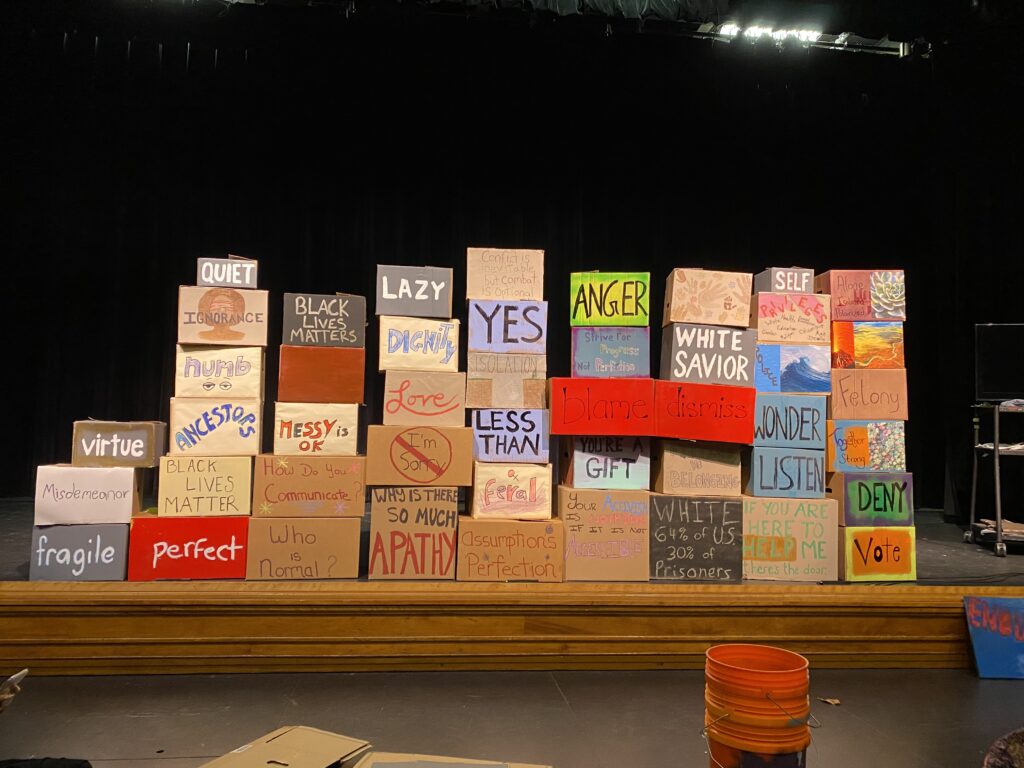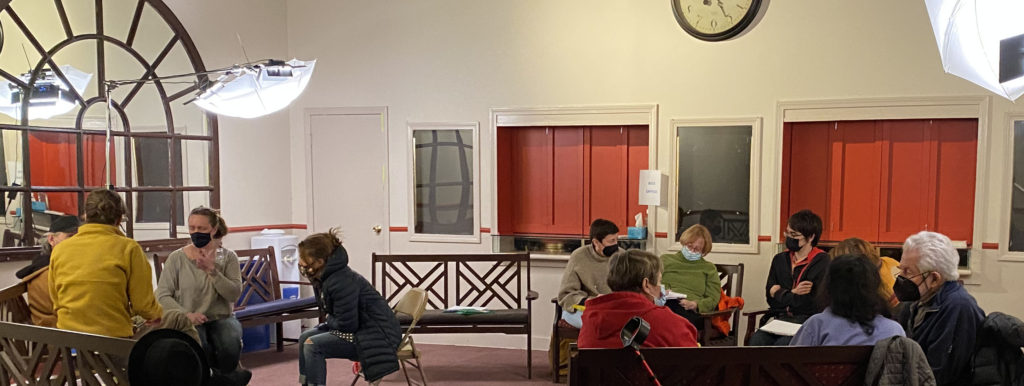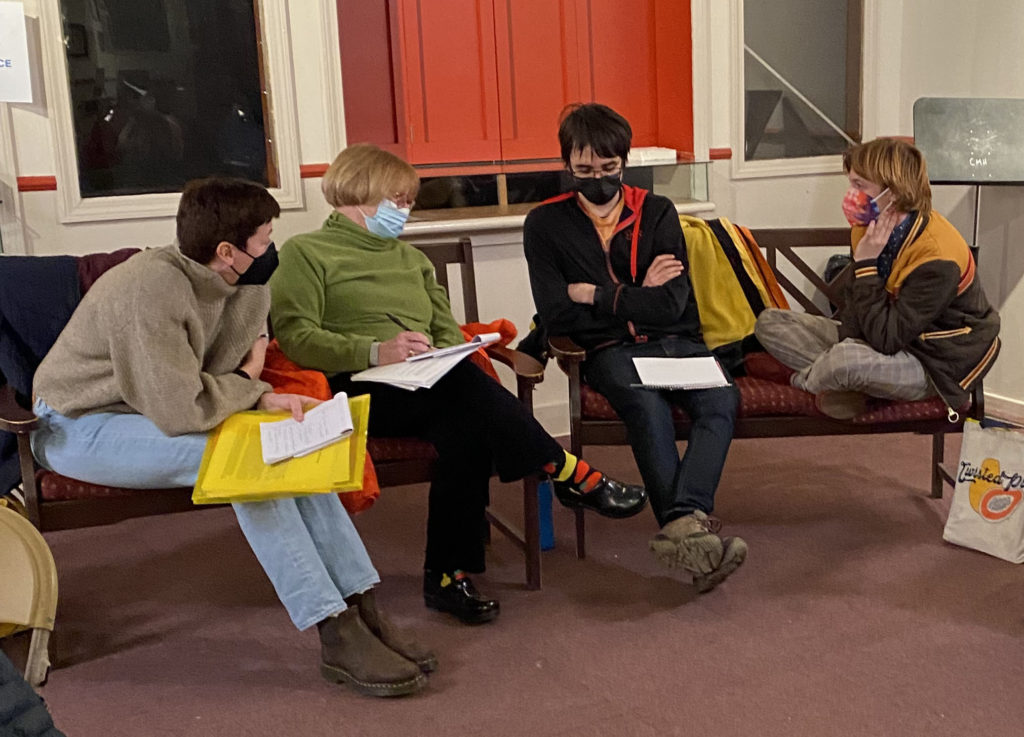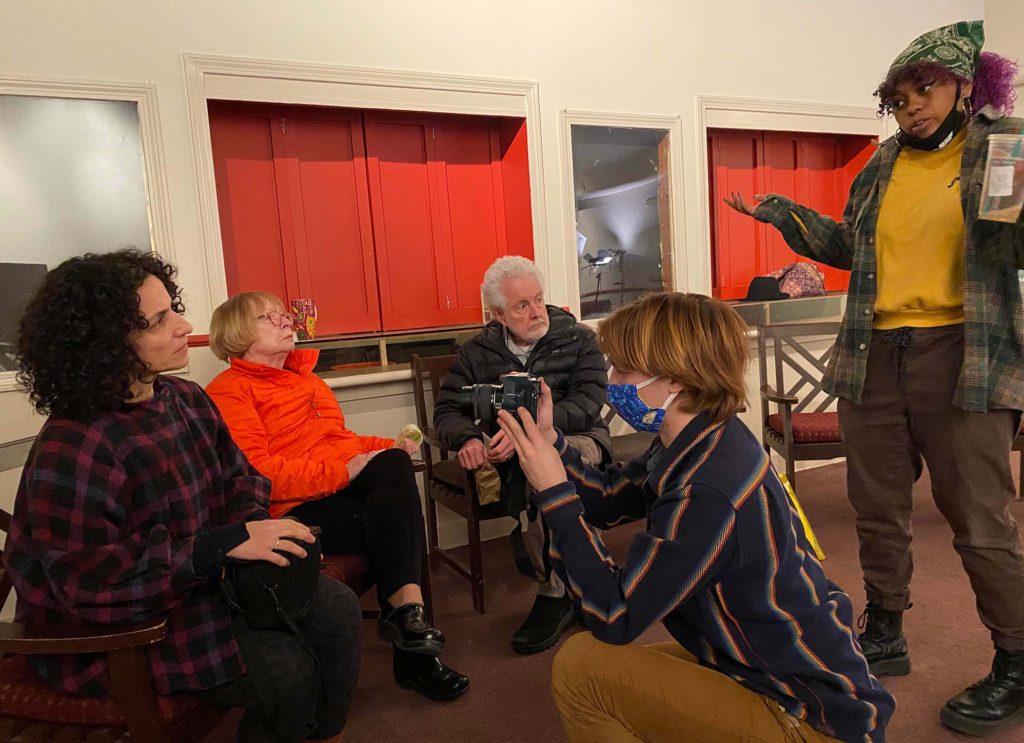Working with rising leaders in the Northeast Kingdom to build community with an eye towards power.
From March 9th to March 11th, I ran Telling My Story: Listening and Speaking in Community- Race, Class and Gender in the Northeast Kingdom of Vermont. I was profoundly moved to be there as it was an area where I lived for 12 years. It was wonderful to be back there in such a different capacity. At the time I lived there I was a mother, a performer with the Bread and Puppet Theater, and I was starting the TMS program at the Newport Correctional Facility. This time around I was a facilitator. We met at the Barton Municipal Building – the perfect place for our work. I was met by a group of curious and intrigued participants composed mainly of leaders of organizations in the Northeast Kingdom that work hard on social issues, combating poverty and facilitating better realities for marginalized community members.
The program had an easy and exciting pace but certainly not without challenges. Because of the remote reality of that area, the organizers and I opened the invitation for people that couldn’t come every day. I ended up having a different group each day. In this reality, we worked with the concept of being present in the moment to produce a strong relay system to give continuity to the work. There was such a strength in that effort because of the selfless nature of such a challenge. It was not easy to do it but at the end we all felt very proud of our work.
And in this version, we talked the first day about the idea of more people coming to the group and the openness was limitless. There was so much courage and generosity from the very first moment. During our first session the group was highly present, enthusiastic and engaged with every activity even if all of them felt they had never been part of such a set of activities. What I respect the most is their courage and the trust they deposited in the work from the very beginning. I was so grateful and excited.
During our second day a couple more people joined the group. We were all happy because both participants were part of the arising leaders in their communities. As we dug more into the idea of taking a leap of faith with others, people took that idea to heart and dove deeply into sharing and doing together. The balancing activity captured that whole feeling as every participant committed to work in pairs to get that balance while in silence as the instructions required. Not an easy task but one that takes us to important places with others as we try to expand our experience with language that we all know is not limited to words. It was humbling to see every single participant try hard to connect with others in body and mind. But it took a toll on people as they felt their muscles complaining the following day. Still, it felt good to put so much energy to the physical work of the workshop to balance the other aspect of the work, the sharing based on words and personal history.
The third day again we had newcomers while others couldn’t stay in the workshop. This time around, the newcomers brought even more diversity to the group, which made us more excited. The last day of the intensive program is a long one and in many ways it is when so much happens; the prior days are like a warm up for voice and for building trust and community in space.
We shared individual stories that made us different and closer at the same time, and we started to dare to be with one another more openly in our quest to find connections in our values, priorities and principles. Giving space and time for ourselves and others showed us that differences are nutrients for community and that being together gave us strength to keep trying to create spaces for change.
The writing of the manifesto was a powerful process. I told the participant that this was their time and that I was stepping away from it. I was moved to witness how the group internally organized to do the writing in an organic and respectful way, and where all voices were included. Laughter, enthusiasm and excitement walked together with disagreement, misunderstanding, and difficult moments. However, the unifying focus was the desire of the group to find new ways to be with one another and to reclaim the beauty and power of our humanity.
During our lunch time potluck I organized the group to start the building of the Talking Wall, which is a graffiti wall that is pasted with words, thoughts, images, questions and wonders of the participants, and in a beautiful way, people went back and forth between the building of the wall and the finishing of the manifesto. At the end of the session, participants had an extra hour to review their testimonials and fine tune their voices.
For the final presentation we had a small audience, just the way the group wanted it to be. It was an intimate time where everyone attending was present and engaged. There was always space for the participant to be present in a way that made them feel comfortable.
The final conversation with the audience was filled up with the kind of curiosity that is intended to expose the self, to share, and to learn. We were all moved to the core and valued the opportunity that is given when we decide to present the work in public.
This program I also experimented with doing fewer activities each day. I was humbled and happy to keep reassuring my belief that doing less can hold the power to create new spaces. I had decided to bring less activities to the workshops to give more time to just process, think, and be with others. The truth is that those breathing spaces are important spaces to build trust and community. And individually and as a group, we got to where we wanted to go. And it worked so beautifully with a community that is used to not being packed with tasks and agendas and that also know how to be in nature- they know how to wonder…. Now I wonder how I can transfer this experience to other communities that are more influenced by the urban social structure. I believe I just have to try.



